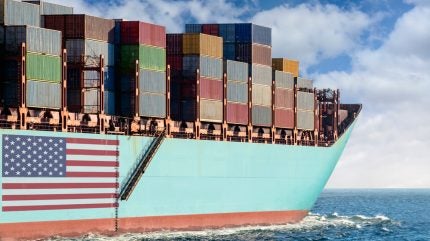
Import cargo volumes in the United States are projected to fall by more than 5% in 2025 compared to 2024, driven largely by rising tariffs and changes in global trade dynamics.
This anticipated decline reflects ongoing challenges in supply chains and shifts in consumer demand patterns, affecting retailers, logistics providers, and the broader economy.

Discover B2B Marketing That Performs
Combine business intelligence and editorial excellence to reach engaged professionals across 36 leading media platforms.
Fall in import cargo volumes linked to tariff hikes
The forecasted reduction in import cargo is closely connected to the implementation of higher tariffs on various goods. Increased import taxes tend to raise costs for businesses, which can lead to reduced orders from overseas suppliers.
This shift may encourage companies to reconsider sourcing strategies, including exploring domestic alternatives or different international markets less affected by tariffs.
The impact of these tariff adjustments is expected to be significant enough to influence overall cargo throughput at major US ports.
Effects on supply chain and retail operations
Decreased import cargo volumes are likely to have ripple effects across supply chains and retail sectors. Fewer imported goods mean changes in inventory levels and potential disruptions in product availability.

US Tariffs are shifting - will you react or anticipate?
Don’t let policy changes catch you off guard. Stay proactive with real-time data and expert analysis.
By GlobalDataRetailers may face challenges in maintaining stock consistency, which could influence pricing and consumer choice.
Moreover, logistics and freight companies might experience fluctuations in demand, requiring adjustments in capacity planning and operations management to cope with the changing cargo landscape.
Broader implications for the US economy
The downward trend in import cargo volumes has implications beyond immediate trade activities. It may affect employment in shipping, warehousing, and transportation sectors, while also influencing inflation and consumer prices.
As businesses adapt to higher tariffs and evolving supply chain conditions, the economy could see shifts in trade balances and investment decisions.
Policymakers and industry stakeholders will need to monitor these developments to understand their long-term effects on economic growth and trade competitiveness.
Navigate the shifting tariff landscape with real-time data and market-leading analysis. Request a free demo for GlobalData’s Strategic Intelligence here.





